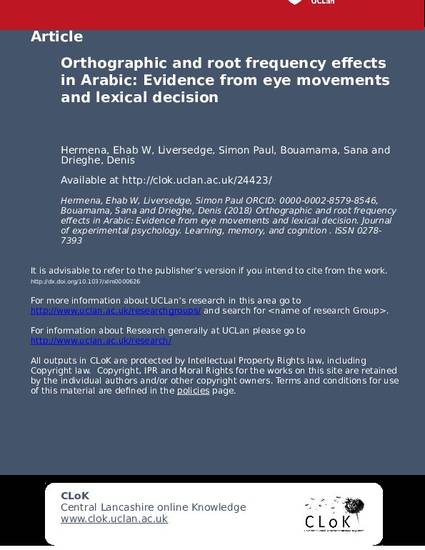
© 2018 American Psychological Association. One of the more studied and robust effects in the reading literature is that of word frequency. Semitic words (e.g., in Arabic or Hebrew) contain roots that indicate the core meaning to which the word belongs. The effects of the frequency of these roots on reading as measured by eye movements is much less understood. In a series of experiments, we investigated and replicated traditional word frequency effects in Arabic: Eye movement measures showed the expected facilitation for high- over low-frequency target words embedded in sentences (Experiment 1). The same was found in response time and accuracy in a lexical-decision task (Experiment 3a). Using target words that were matched on overall orthographic frequency and other important variables but that contained either high- or low-frequency roots, we found no significant influence of root frequency on eye movement measures during sentence reading (Experiment 2). Using the same target words in a lexical-decision task (Experiment 3b), we replicated the absence of root frequency effects on real Arabic word processing. At 1st glance, the results may not appear to be in line with theoretical accounts that postulate early morphological decomposition and root identification when processing Semitic words. However, these results are compatible with accounts where morphological decomposition does occur but is followed by recombination, and under certain conditions recombination costs can eliminate or even reverse root frequency effects.
- Eye movements,
- Frequency effects,
- Lexical decision,
- Reading Arabic,
- Semitic morphology
Available at: http://works.bepress.com/ehab-hermena/5/